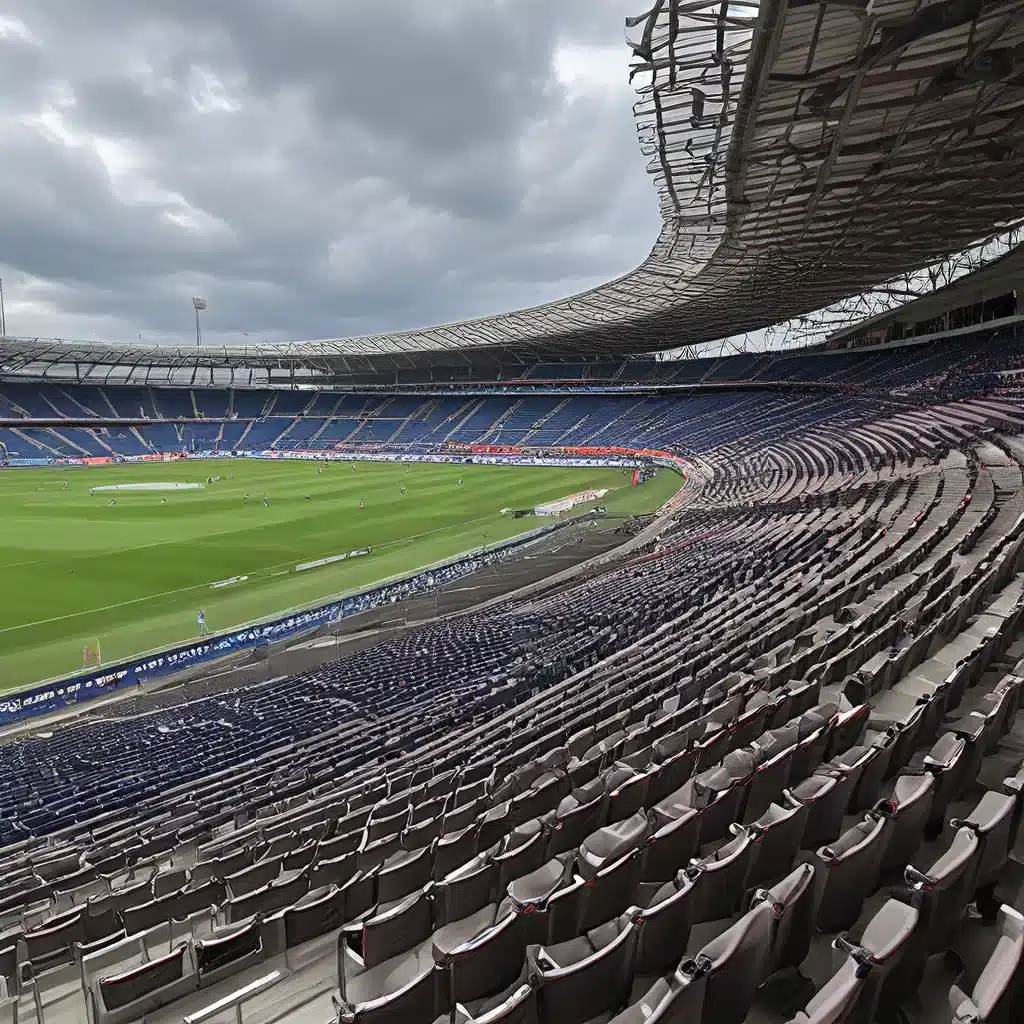
The Architectural Masterpiece that Defies the Elements
Nestled in the heart of Villeneuve-d’Ascq, France, Stade Pierre-Mauroy stands as a testament to human ingenuity and the relentless pursuit of engineering excellence. This modern stadium, home to the professional football club LOSC Lille, has captured the attention of sports enthusiasts and architectural aficionados alike for its unique design and innovative features.
The stadium’s most striking characteristic is its retractable roof, a technological marvel that allows for seamless adaptation to the region’s capricious weather conditions. Designed by the renowned architectural firm Valode & Pistre, the stadium’s retractable roof spans an impressive 11,000 square meters, making it the largest of its kind in Europe. This engineering feat not only provides shelter for spectators but also enables the venue to host a wide range of events, from football matches to concerts, regardless of the weather.
The stadium’s adaptability has been a key factor in its success, allowing it to host prestigious events such as the 2016 UEFA European Championship and the 2023 Rugby World Cup. The retractable roof is not merely a practical solution, but a testament to the architects’ commitment to pushing the boundaries of stadium design.
Battling the Elements: The Challenges of Stade Pierre-Mauroy
The location of Stade Pierre-Mauroy, nestled in the northern region of France, presents its own set of challenges. The area is known for its variable weather conditions, with frequent winds, rain, and occasional snowfall, making it a true test of the stadium’s engineering prowess.
One of the primary concerns during the stadium’s construction was the impact of the strong winds that often sweep through the region. The retractable roof was designed to withstand gusts of up to 130 km/h, ensuring the safety and comfort of both spectators and the players on the field. The roof’s structure is engineered to distribute the wind load evenly, preventing any undue stress on the supporting columns and foundations.
In addition to the wind, the stadium’s architects had to contend with the region’s unpredictable rainfall. The retractable roof not only provides shelter from the rain but also allows for the playing field to be kept in optimal condition, even in inclement weather. This feature has been particularly useful during the winter months, when the combination of rain and low temperatures can wreak havoc on the pitch.
Embracing Sustainability and Innovation
Stade Pierre-Mauroy’s commitment to sustainability and innovation extends beyond its retractable roof. The stadium is a shining example of eco-friendly design, with a range of features that aim to minimize its environmental impact.
One of the most notable sustainable features is the geothermal energy system used to heat and cool the stadium. This system taps into the Earth’s natural heat, reducing the stadium’s reliance on traditional fossil fuels and significantly lowering its carbon footprint. Additionally, the stadium’s solar panel array generates a portion of the energy required to power the facility, further contributing to its environmental credentials.
The stadium’s design also incorporates innovative solutions to enhance the spectator experience. The stadium’s seating configuration is designed to maximize the sense of atmosphere and immersion, with the stands positioned closer to the pitch than in many traditional stadiums. This layout, combined with the retractable roof, creates a truly unique and captivating environment for fans to enjoy the action on the field.
Embracing the Future: Stade Pierre-Mauroy’s Ongoing Evolution
As Stade Pierre-Mauroy continues to evolve, the stadium’s architects and operators are constantly exploring new ways to enhance the facility and improve the overall experience for visitors. This commitment to innovation and adaptation is a defining characteristic of the stadium, as it seeks to remain at the forefront of stadium design and technology.
One area of ongoing research and development is the integration of advanced data and analytics systems. These systems aim to provide real-time insights into crowd movement, energy consumption, and other key metrics, allowing the stadium’s management to optimize operations and enhance the spectator experience. The incorporation of these technologies is likely to play a significant role in the stadium’s future development, as it strives to stay ahead of the curve in an ever-changing industry.
Moreover, Stade Pierre-Mauroy’s commitment to sustainability is an ongoing process, with the stadium’s operators continuously exploring new ways to reduce its environmental impact. This may include exploring alternative energy sources, implementing more efficient waste management systems, and exploring innovative approaches to water conservation – all with the goal of making the stadium a model of environmental stewardship in the sports industry.
As Stade Pierre-Mauroy continues to captivate audiences and push the boundaries of stadium design, it stands as a shining example of human ingenuity, technological innovation, and a relentless pursuit of excellence. This iconic venue serves as a testament to the power of architecture and engineering to create spaces that not only fulfill their functional purpose but also inspire awe and wonder in those who experience them.

